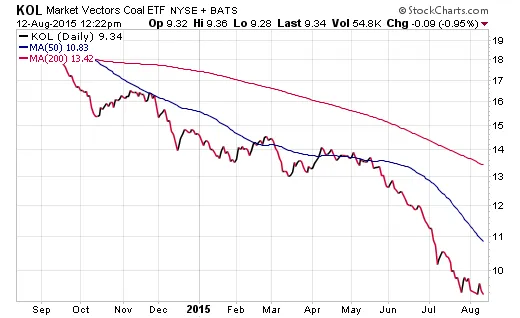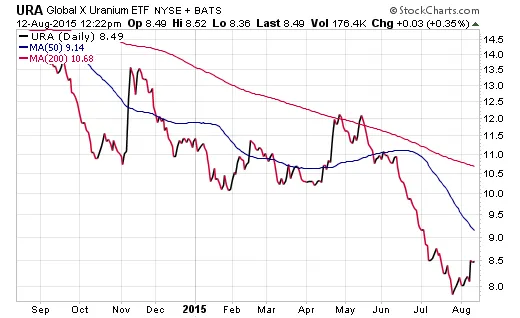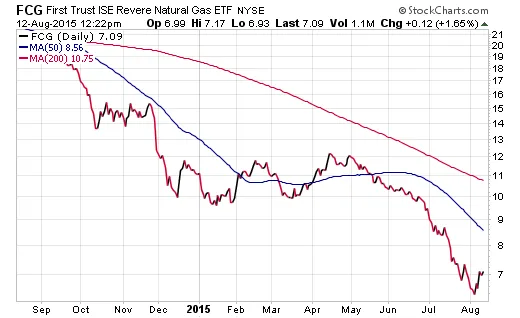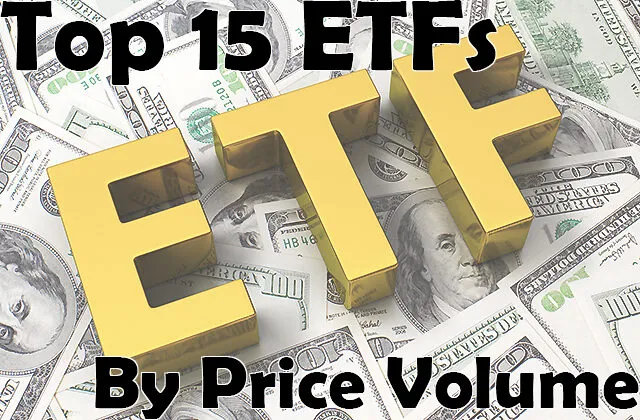The impact from price deflation in commodity-linked industries has continued its path of destruction in 2015. Despite flat performance in the SPDR S&P 500 ETF (SPY), many niche ETFs driven by energy, precious metals, and other natural resources have fallen by the wayside.
For instance, plunging gold prices have dragged down the Market Vectors Gold Miners ETF (GDX) by over 25% at the low of the year. A recent rally has recovered a portion of those losses. Yet many other industries have experienced even steeper declines that make gold miners look like a walk in the park.
In fact, several of these concentrated indexes are currently trading near all-time lows as a result of multi-year downtrends. Whether you are a deep value investor or simply like to rubber neck at ill-fated misfortune, there is something for everyone in this list.
Market Vectors Coal ETF (KOL)
The coal industry has been in steep decline for over half a decade and KOL has felt the effects of that downward spiral. This exchange-traded fund tracks 30 global stocks that derive at least 50% of their revenue from coal mining and production.

KOL has dropped 36% so far this year and recently touched new 52-week lows. Investors have clearly shunned this old-school energy industry in favor of more high growth opportunities in alternative power solutions such as solar and wind names. As an example, the Guggenheim Solar ETF (TAN) has jumped 109% over the last three years.
Global X Uranium ETF (URA)
Uranium stocks are another energy-related industry that has been unable to buck a pernicious long-term downtrend. URA has $163 million dedicated to 25 global companies that mine, refine, and manufacture equipment for uranium needs. Despite the ongoing demand to support nuclear energy fuel, this ETF has slogged persistently lower.

An interesting aspect to this niche ETF has been the sharp rallies that have materialized along the way. This volatility is often associated with more concentrated indexes and highlights the necessity of sizing more specialized investment strategies appropriately.
While the performance of URA has been less than stellar, the investors have continued to add money to this index over the last 12 months in hopes of a turnaround. URA is currently sitting on losses of more than 25% in 2015.
First Trust ISE-Revere Natural Gas Index Fund (FCG)
Stocks engaged in the exploration and production of natural gas have seen their share prices deflate with the drop in commodity futures prices. FCG tracks 30 publicly traded companies in this space and constructs its underlying holdings based on fundamental criteria. The end result is an industry-specific ETF with $190 million dedicated to a unique basket of energy stocks.

FCG is down more than 35% so far this year as natural gas prices have continued to trend lower. The United States Natural Gas Fund (UNG) has made several rally attempts in 2015, but has yet to find itself back in the good graces of energy speculators. A resurgence in natural gas futures would likely act as a tailwind for FCG moving forward and allow it to recover from the multi-year malaise.
The Bottom Line
The price action in these ETFs has warranted watching from the sidelines as they continue to show little reason to be excited about a turnaround. Nevertheless, investors looking for deep discounts may want to add these funds to their radar as candidates that would benefit from a reversal in commodity prices. At some point, these funds will likely experience sharp rally attempts given how badly beaten down their share prices are on a relative basis.
